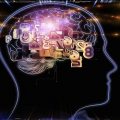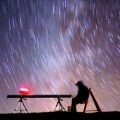PTE考生目前最大的问题之一就是练习题缺乏。除了有限的基本官方书(PLUS,Testbuilder, OG)之外,就没有题了。很多英语基础不是很扎实的同学很难找到练习材料。墨尔本文波雅思PTE培训学校专门为墨尔本,悉尼PTE考生准备了适合PTE听力阅读练习的科学60秒。各位PTE同学可以练习PTE听力中的summarise spoken text和PTE口语中的retell lecture,练习记笔记技巧和复述。废话少说,下面开始:
2014 Nobel Prize in Physiology or Medicine
听力内容:
60秒科学节目(SSS)是科学美国人网站的一套广播栏目,英文名称:Scientific American – 60 Second Science,节目内容以科学报道为主,节目仅一分钟的时间,主要对当今的科学技术新发展作以简明、通俗的介绍,对于科学的发展如何影响人们的生活环境、健康状况及科学技术,提供了大量简明易懂的阐释。
“The Nobel Assembly at Karolinska Institute has today decided to award the 2014
Nobel Prize in Physiology or Medicine, with one half to John O ?Keefe and the other half jointly to May‐Britt Moser and Edvard I. Moser, for their discoveries of cells that constitute a positioning system in the brain.”
Goran Hansson of the Nobel Committee. O’Keefe is at University College London. He discovered the so-called “place cells” in the hippocampus in 1971. The married Mosers are at the Norwegian University of Science and Technology in Trondheim. In 2005 they found the other component of the brain’s inner GPS system, the grid cells.
Juleen Zierath, chair of the Nobel Committee, explains in terms of visiting Sweden and looking for a landmark, a recovered 17th-century Swedish warship called the Vasa Ship.
“You’re going to go visit an exciting city like Stockholm. And you’ve never been there before. And so, the first thing you do is you take a map from the hotel. And you’re going to help your family find the Vasa Ship. So you have landmarks on the map. It could be the city hall, it could be the concert house, it could be the palace, and the Vasa Ship. Those are like your place cells, because as you pass those landmarks, they recognize your place in space.
“The other thing you need on that map is longitude and latitude. You need to find a way to navigate to the Vasa Ship in a very efficient way. And the grid cells function like that navigational chart. They help you judge your distance and help you find your way.
“The remarkable thing is that we don’t need to have the map in our hands. We have these maps in our brain. And so I would describe it that way. Thanks to our grid and place cells, we don’t have to walk around with a map to help us find our way each time we visit a city, because we have that map in our head.”
For a more in-depth listen about the 2014 Nobel Prize in Physiology or Medicine, look for the Scientific American Science Talk podcast later this morning.
—Steve Mirsky





